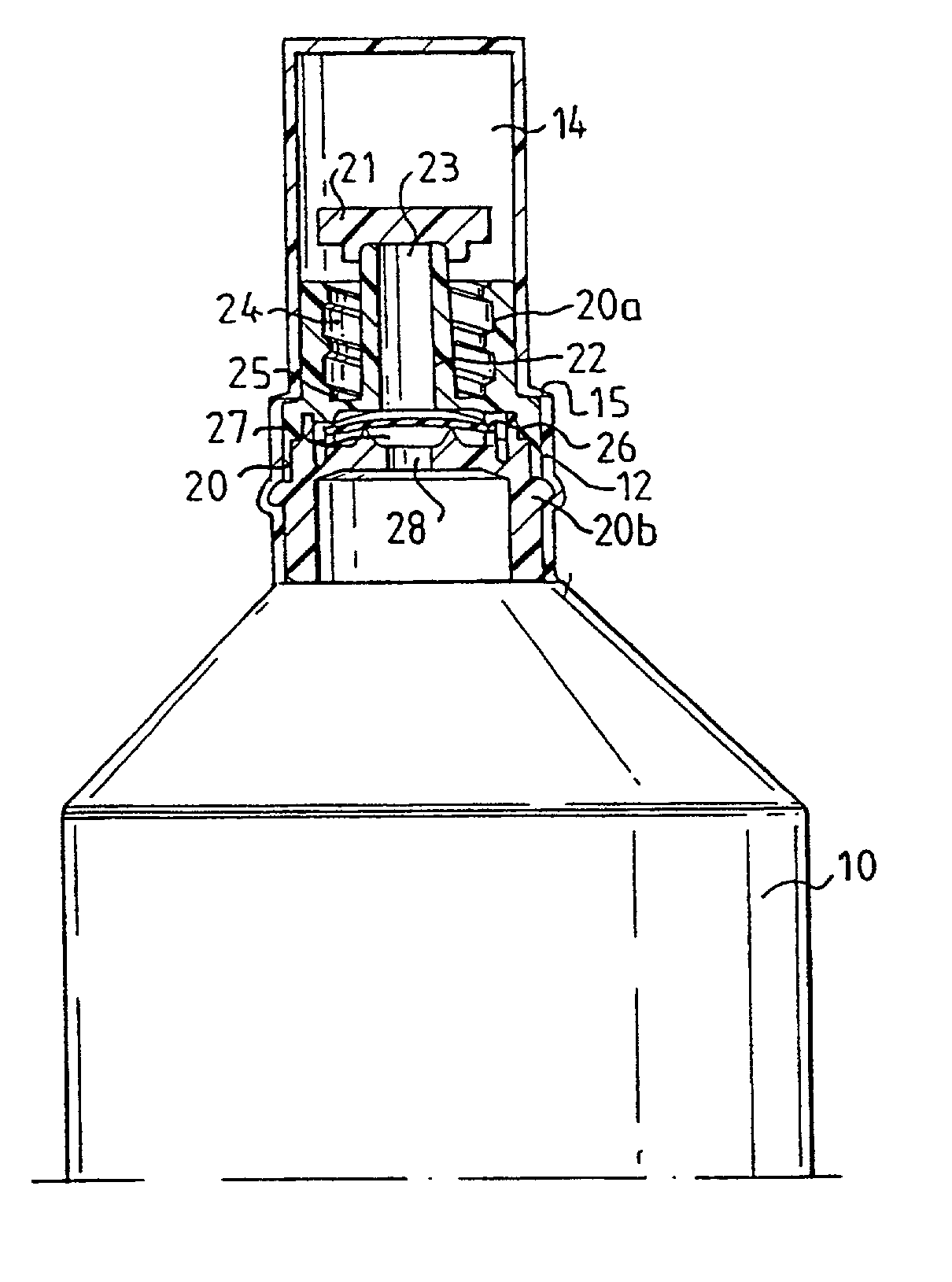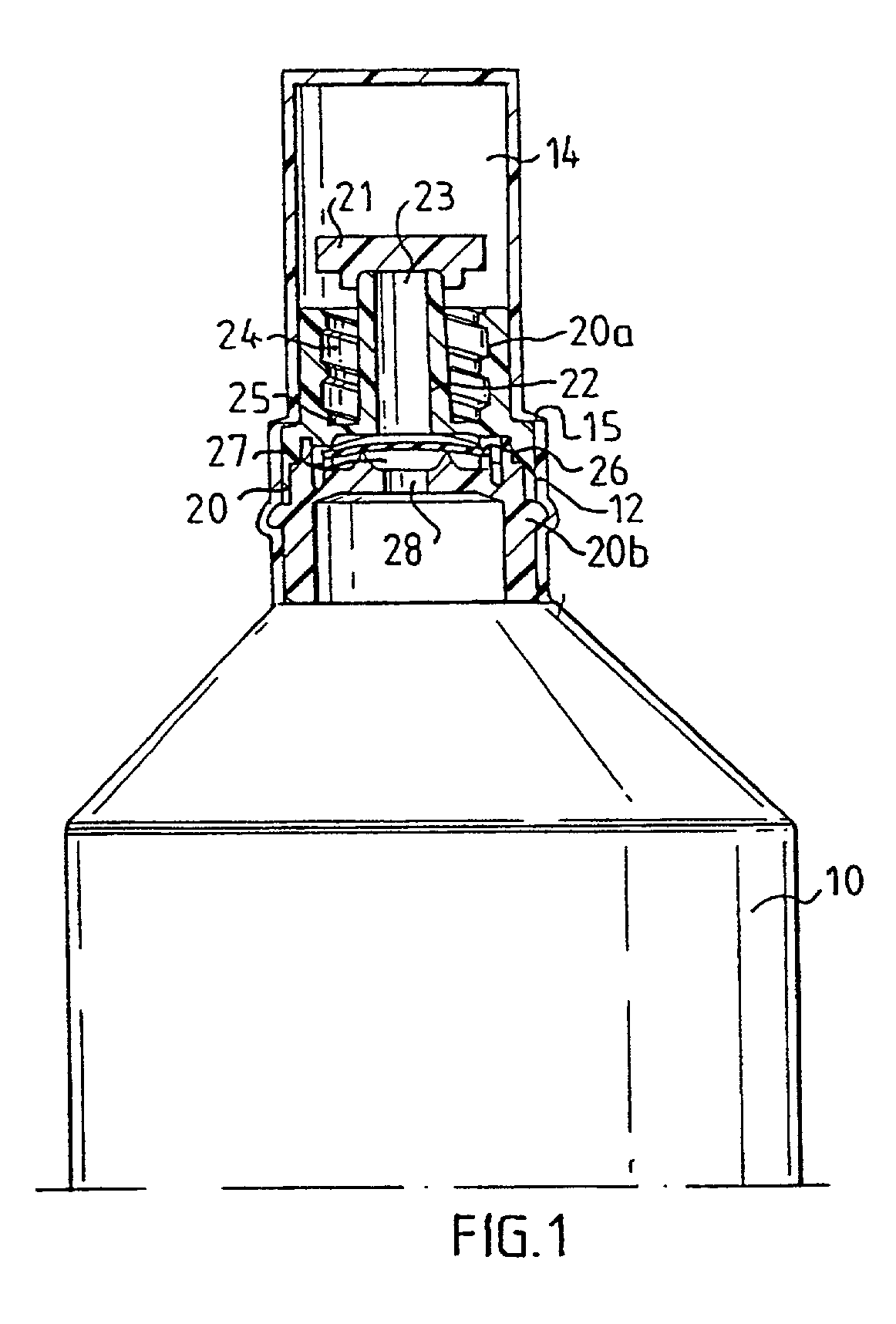Container for intravenous administration
a container and intravenous technology, applied in the direction of hose connections, packaging foodstuffs, packaged goods types, etc., can solve the problems of extra routine, contamination, faulty handling, etc., and requires a certain skill and accuracy
- Summary
- Abstract
- Description
- Claims
- Application Information
AI Technical Summary
Benefits of technology
Problems solved by technology
Method used
Image
Examples
Embodiment Construction
[0007] The present invention relates to a device for storing and administering a medical fluid, comprising a sealed flexible container which is generally bottle formed or of a similar shape. In its front end, the container is provided with an opening part, in which an insert is sealingly positioned. In order to protect the insert during handling and storing prior to the use of the device, the container is formed during its manufacturing so it directly extends into sealing cap over said insert. The cap is removable by being provided with weak line or a similarly rupturable zone so the user by a simple twisting motion may remove the entire cap or a substantial part thereof to expose the insert when the fluid in the container shall be used and fluid communication shall be established between the container and an attachable injection means, preferably with a conventionally shaped cannula comprising a front needle part connected to generally conical hollow rear part. This is accomplished...
PUM
 Login to View More
Login to View More Abstract
Description
Claims
Application Information
 Login to View More
Login to View More - R&D
- Intellectual Property
- Life Sciences
- Materials
- Tech Scout
- Unparalleled Data Quality
- Higher Quality Content
- 60% Fewer Hallucinations
Browse by: Latest US Patents, China's latest patents, Technical Efficacy Thesaurus, Application Domain, Technology Topic, Popular Technical Reports.
© 2025 PatSnap. All rights reserved.Legal|Privacy policy|Modern Slavery Act Transparency Statement|Sitemap|About US| Contact US: help@patsnap.com


